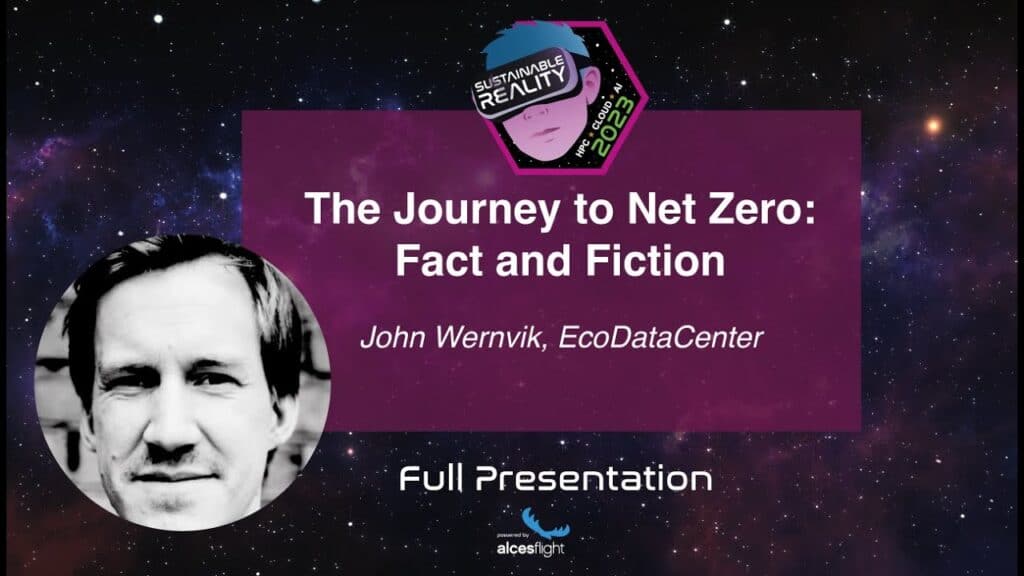Can HPC ever really be Net Zero?
A key factor in the push towards sustainable, ecological HPC is an over-arching desire for communities, companies, and individuals to achieve ‘Net Zero.’ But what is Net Zero? And can we ever really turn the field of supercomputing into a wholly ecological reality?
John Wernvik delved into this subject at our Sustainable Reality event held at the National Space Centre. His experiences in renewable energy computing at EcoDataCentre highlight three crucial aspects that need exploration for our field to wholeheartedly embrace the Net Zero objective.
The biggest challenge to achieving Net Zero? Carbon removal.
Lets be clear, we need to do everything to minimize our carbon footprint. But for every company or institution that footprint will never be zero by itself. As detailed in our initial post, carbon plays a central role in all facets of sustainability. Carbon is essential in the production and consumption of resources, making the removal of excess carbon a key component for true carbon neutrality. Currently, carbon removal technology is in its early stages, with various methods undergoing testing and scaling (here is a short list if you would like to learn more). It’s also imperative to acknowledge that not all carbon removal processes are equal, each associated with distinct benefits and risks in every ongoing project.
The significance of ‘additionality’
John explained that within the realm of renewable energy computing, the primary objective is not merely to redirect existing renewable power for data centres but to contribute surplus energy back to the grid. He defined this concept as “additionality” and provided examples from Sweden’s “Balancing Services” to illustrate how fostering a robust digital ecosystem can result in negative prices, underscoring the benefits of integrating renewable energy.
Additionally, the concept of ‘additionality’ extends to the entire value chain process that renewable energy sites, such as EcoDataCenter, are actively developing and enhancing. For instance, all new construction sites by EcoDataCenter prioritise the use of localised materials, incorporate heat re-use strategies, and establish connections to the surrounding area for localised benefits. This approach contributes significantly to overall community growth.
A journey, not a checkbox
It’s crucial to recognize one of the significant challenges in achieving Net Zero: the phenomenon of “Green Washing.” With reporting scopes on the horizon and an unprecedented demand for transparency, it becomes imperative to view the process not as a static checklist but as an ongoing, dynamic endeavour.
As we move ahead on the trajectory toward a sustainable High-Performance Computing (HPC) future, acknowledging the current state of progress toward Net Zero becomes essential. Net Zero is not a checkbox exercise; instead, it necessitates a continuous commitment to transparency, innovation, and collective dedication within the community. This collaborative effort defines the roadmap to a greener, more sustainable tomorrow.
Get the full picture.
Would you like to see John’s full presentation? Check it out below:


